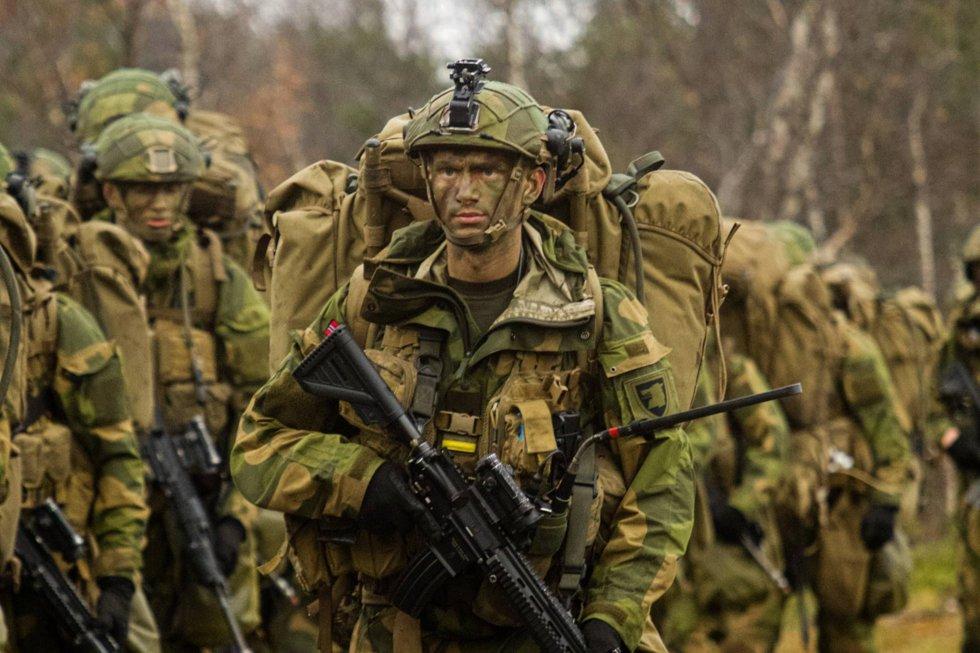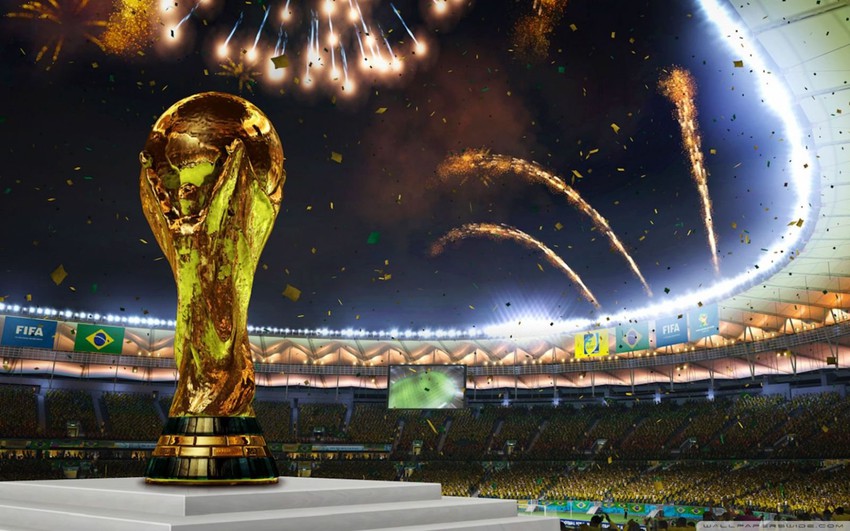The war in Ukraine has awakened Europe from its slumber. After many decades of peace in most of Europe, preparedness in country after country has now been honed, defense budgets strengthened and arms orders accelerated.
Fear of war now characterizes many Europeans. In several countries, citizens feel that war is approaching. Now there is open talk of nuclear war and the third world war.
Fear of war is spreading in Europe
NATO chief Jens Stoltenberg believes it is urgent to strengthen Ukraine’s air defenses. Photo: Olivier Matthys / AP
When the remains of a missile fell on Polish territory this week, the alarm was immediately raised in NATO. NATO’s Article 4, which gives a member state the right to direct consultations within NATO, was considered but quickly scrapped. The article can be activated when a NATO country feels that its security, political independence or territorial integrity is directly threatened.
At the same time, residents of countries bordering Ukraine and Russia live in fear that the war will spread. Sweden and Finland have already applied for NATO membership. In Norway, the Minister of Defense and the Chief of Defense have long implemented a series of measures to strengthen preparedness. Many of the measures are covert so as not to give a potential enemy sensitive information about Norway’s defense.
– Can everyone who wants to defend Norway take up arms?
But what really happens if Norway were to be attacked, or directly involved in a war as a result of another NATO country being attacked?
Only conscripts in the Norwegian armed forces are able to resist, or are Norwegians free to take up arms or join the defence?
According to Section 2 of the Defense Act on Service in the Armed Forces, there are clear criteria for who can be ordered to fight:
“When war threatens and in the event of strengthening of forces, the Armed Forces may order persons with compulsory service, according to Section 2 of the Defense Act, to serve in the Armed Forces. This includes conscripts, military employees and persons with a service contract with the Armed Forces. Duty of service is the duty, in peace and war, to perform the duties assigned by the Armed Forces, in the position and place determined by the Armed Forces.”
(Article continues below the video).
Video: Stoltenberg: – The Arctic is becoming increasingly important for NATO
– Preferably those with the most “fresh” skills will be called first
If the government decides that the military is to implement a partial or full force build-up, conscripts who are assigned to force in the military structure will be required to serve in accordance with the assignment charter received. When and to what extent force-building will take place depends on the current security policy situation.
– When building strength, it is assumed that the strength structure is primarily used. Depending on the level of threat or conflict and the duration of the conflict, replacement personnel will need to be called in at some point. This personnel will be conscripts with skills that the military needs and are not assigned to the force. Preferably those with the “freshest” skills will be called first, Lieutenant Colonel and press officer of the Norwegian Armed Forces, Vegard Norstad Finberg, told ABC Nyheter.
The government has the last word

Pasi Välimäki, Lieutenant General, Finnish Army Commander, Lars Sivert Lervik, Major General, Norwegian Army Commander and Karl Lorentz Engelbrekt Engelbrektson, Major General, Swedish Army Commander meet at Målselv in Troms during NATO exercise Cold Response 2022 Photo: Didrik Linnerud Arnesen / Armed Forces / NTB
The notification of the deployment of forces and the call to service is carried out by the Armed Forces, with the necessary support of other public bodies and the media. Information on decisions made by the King in Council or by the Government is provided by the Government.
What measures, if any, are prepared and implemented are determined by the government through royal resolutions.
– Measures are established in the National Preparedness System, consisting of the Civilian Preparedness System (SBS) and the Armed Forces Preparedness System (BFF). The content of the preparation system is classified as restricted according to the security law and cannot be discussed in more detail, points out Lieutenant Colonel Vegard Norstad Finberg.
The total force structure in Norway amounts to approx. 70,000
In 2021, the Armed Forces had approximately 17,185 full-time equivalents. Of these, 20 percent were women. The entire total force structure in Norway amounts to nearly 70,000 personnel. As of 2021, the military had just over 9,000 conscripts and 575 trainees.
All personnel of military age, i.e. up to 44 years of age, and who have attended at least one session, can in theory be mobilised, but the Norwegian Armed Forces does not release specific figures on total mobilization strength.
According to a survey conducted by Opinion, on behalf of Folk og Forsvar, a politically neutral umbrella organization that carries out information activities on Norwegian defense and security policy, the willingness to defend is on the rise among Norwegians.
At the same time, the survey shows that conscription is deeply felt by the Norwegian people. Nine out of ten respondents believe Norway should have military defence.
When asked whether Norway should defend itself militarily, even if the outcome is uncertain, a full 87% said yes. Last year, the percentage was 80%.
Video: Strong impressions: Georgian forces send Wagner soldiers to flight
Different dilemmas in opening guerrilla groups in warfare
– Will separate guerrilla groups outside the Armed Forces be accepted, or will everything have to be done under the auspices of the Armed Forces?
– In essence, guerrilla groups are not a legally recognized category under the international law of war, but are usually perceived as a form of conflict characterized by the use of small, easily mobile units, operating largely in secret and directing attacks surprise against the adversary, writes the lieutenant colonel and press officer of the Norwegian armed forces, Vegard Norstad Finberg, in an e-mail to ABC Nyheter.
But he also sees several dilemmas in the fact that the irregular forces operate alongside the established armed forces in a difficult situation on Norwegian territory.
– The armed forces are responsible for ensuring compliance with international law

Russian President Vladimir Putin oversees a military exercise in Vostok September 6, 2022. Photo: Mikhail Klimentyev / AP
– From a legal point of view, the most evident feature, and often the most questionable, is that guerrilla activities are often carried out without a clear distinction between combatants and protected civilians. The answer to the question as we interpret it depends on whether the participants in a guerrilla group are legal combatants under international law.
Norstad Finberg stresses that the issue of armed resistance is governed by international law and that Norway will follow international law.
– We assume from the way the question is asked that it applies to situations during international armed conflicts. We also understand that the question is whether and when guerrilla groups can act legally under international law. This means that the state, including the Norwegian armed forces, is responsible for ensuring compliance with international law, explains Lieutenant Colonel Vegard Norstad Finberg.
– Lawful fighters are lawful targets
He points out that the decisive question is who is a “lawful combatant”.
– This status gives the right to carry out acts of war without incurring criminal liability, in addition to the fact that it is the only one that gives the right to prisoner of war status, with a few narrow exceptions. Furthermore, lawful combatants are lawful targets of attack for the other side’s lawful combatants, which runs counter to the fact that all others are basically civilians and therefore it is illegal under international law to attack.
According to the opinion poll commissioned by Folk og Forsvar, the willingness of Norwegians to spend more on defense is increasing. This year, 44 percent of respondents said the defense budget is too small. Last year, 36% thought the same.
Support for NATO membership has also increased over the past year. 84% responded that NATO helps protect Norway. This is five percentage points higher than last year.
Video: Zelenskyj with a warning to the West: Now is the time


